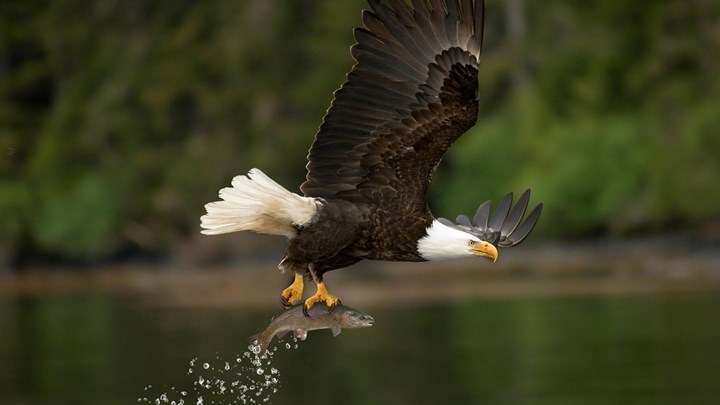
by Brian McCombie - Tuesday, June 17, 2025

The U.S. Fish and Wildlife Service recently announced that it will distribute more than $55 million to state fish and wildlife agencies this year through the State Wildlife Grant (SWG) Program. The aim of the program: to protect and manage species of conservation need, to promote the recovery of wildlife and to conserve habitats nationwide.
Over the last two decades, the SWG Program has invested more than $1.34 billion with various partner agencies to address a variety of conservation needs including fish and wildlife surveys, species restoration and habitat management, as well as numerous related research projects. Partner agencies include state fish and wildlife departments, private landowners, universities, and industry and nonprofit conservation organizations. Most recipient agencies provide at least 25 percent in non-federal matching funds for proposed projects.
SWG funds are allocated to all states, commonwealths, U.S. territories and the District of Columbia according to a congressionally mandated formula based on population size and geographic area.
“The State Wildlife Grant Program supports conservation actions aimed at avoiding new federal listings of threatened and endangered species, recovering those species already listed and ensuring healthy populations of each state’s top-priority fish and wildlife species for future generations,” said Paul Souza, Acting Director of the U.S. Fish and Wildlife Service. “We are pleased to be working with these partners to protect America’s natural resources and wild places.”
Past SWG funded projects include programs in Arkansas to help the red-cockaded woodpecker, Henslow’s sparrow and the brown-headed nuthatch, and work in the Great Lakes region to improve lake sturgeon populations.
Other Species
SWG grants have helped to improve the status of many other wildlife species, too, including the Louisiana Black Bear.
The state mammal of Louisiana, this black bear population inhabits Louisiana, east Texas and western Mississippi. By 1980, according to a report published by the U.S. Fish and Wildlife Service (USFWS) and the Association of Fish and Wildlife Agencies, an estimated 80 percent-plus of the bear’s original habitat had been modified or destroyed. In 1992, the Louisiana black bear was listed as threatened by USFWS.
As the reported noted, “For nearly 10 years, the Louisiana Department of Wildlife and Fisheries (LDWF) has utilized State Wildlife Grant Program funding and other resources to implement a broad suite of conservation actions to benefit this unique species.”
Reforestation was the top criterion, and LDWF restored nearly 800 acres of bottomland hardwood forest, a major contribution to the bear’s recovery. Educational outreach and technical assistance also lowered the number of human/bear conflicts.
Program funding for this effort totaled $1,213,000. Of that amount, LDWF and other partner organizations contributed $431,000, while SWG grants accounted for the remaining $782,000.
And, in 2016, these efforts were so successful, USFWS delisted the Louisiana black bear. SGW grants monies are aiding the Lesser prairie chicken in the southern Great Plains, specifically in the Sand Sagebrush Ecoregion near the Cimarron National Grasslands in southwestern Kansas and the Comanche National Grasslands in southeastern Colorado.
Colorado Parks and Wildlife (CPW) and Kansas Department of Wildlife, Parks and Tourism (KDWPT) partnered with Kansas State University and the U.S. Forest Service to implement a three-year translocation project to restore core populations of the iconic Western bird.
To make this project a reality, SWG Program funds combined with Wildlife Restoration Program monies from the USFWS along with various matching resources from the two states and their university partners.
Between 2016 and 2019, project volunteers conducted four trapping and translocation operations, resulting in some 411 Lesser prairie chickens being moved from the Short-Grass Prairie Ecoregion in Kansas to the Sand Sagebrush Ecoregion. In early May 2020, one full year after the last bird was released, Colorado and Kansas biologists and technicians found 115 male birds and 20 active leks on or near the Comanche and Cimarron National Grasslands, leks established by the translocated birds and their offspring.
More work is required to fully restore populations of these birds. However, the $345,400 invested by SWG grants plus the $159,000 in partner funding have established a solid foundation for future efforts to conserve the Lesser prairie chicken in the region.
E-mail your comments/questions about this site to:
[email protected]
Proudly supported by The NRA Foundation and Friends of NRA fundraising.
